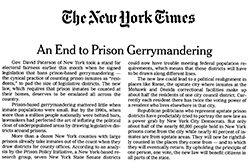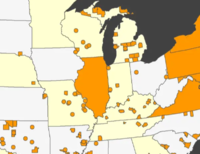NAACP LDF to hold Voting Rights and Redistricting Training Institute
Many experts on prison-based gerrymandering will be in attendance.
by Peter Wagner, September 16, 2010
 The NAACP LDF will be holding the Voting Rights and Redistricting Training Institute at the Airlie Conference Center in Warrenton, VA on October 8 and 9.
The NAACP LDF will be holding the Voting Rights and Redistricting Training Institute at the Airlie Conference Center in Warrenton, VA on October 8 and 9.
Jenigh Garrett of the NAACP LDF will talk about prison-based gerrymandering on the first panel “Race, Reform and Independent Redistricting Commissions.” The agenda features a number of the leading experts and commentators on prison-based gerrymandering, including Dale Ho, Brenda Wright, Nate Persily and Pamela Karlan. They will appear on various panels and speak about the role of the Voting Rights Act in redistricting, the importance of recognizing diversity in the context of redistricting, and strategies for safeguarding minority voting rights.
I’ll be in attendance and am looking forward to seeing you there!
 The New York Times cites our research on prison-based gerrymandering in the
The New York Times cites our research on prison-based gerrymandering in the 


